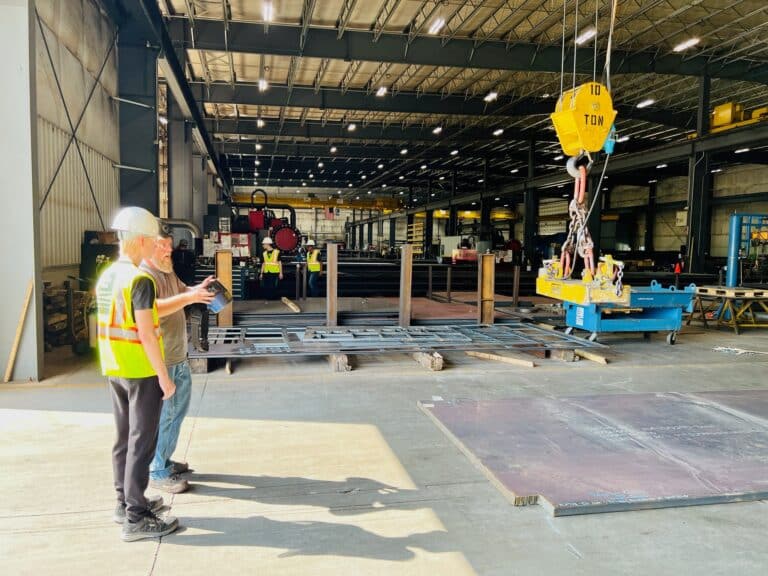This article was first published in the KCED Fall 2024 Newsletter
Jason Duininck, Business Developer for Duininck Inc., is quoted on the business’ website as saying, “I have always had an interest in helping people reach their potential and improving my community.” It is easy to see how the idea of building a partnership that supports a specialized class at Willmar High School and introduces students to manufacturing jobs would come naturally to Duininck. The idea became a reality in 2018 when five Kandiyohi County manufacturers and construction companies united to host students while Mike Kroeker, a teacher at Willmar High specializing in technical programs, would coach the students in and out of the classroom.
Duininck Inc., Marcus Construction, which also works with Willmar Electric for their part of the program, Nova-Tech Engineering, West Central Steel and RELCO are all partners in the program. Kroeker, who also coaches the robotics team, said, “The class meets daily, but then we are in the field every day; it is a complete hands-on program.” Over the last six years, 65 students have graduated from the class. While the class primarily attracts male students to the program, there have been two female students. “I don’t know what it is, but those ladies were just better at multi-tasking and doing two things at once with their hands, and that is a skill you need for TIG welding.” Kroeker said with a chuckle.
Students can take the skills like drafting, welding, and machining and put them into direct practice. This practice occurs on the work floors, construction sites, and inside heavy equipment of its business and company partners. That firsthand experience was witnessed when the class had its day on the manufacturing floor of West Central Steel (WCS). With a quick introduction to the rotations they’d be going through, the class was dressed in protective gear and brought to the floor. Here, WCS’s skilled staff had the opportunity to be teachers, demonstrating and then coaching students on equipment. The young men of this class sometimes confidently and other times hesitantly to type in commands on high-tech computers, igniting a robotic plasma-cutting machine to cut metal in intricate and detailed patterns. They take the remote of a crane, which expands the width of the entire building to lift up to 10 tons of fabricated steel. They then delicately hold a piece of steel as a machine moves over it with ease, folding it into a calculated form. Over the next hour and a half, students rotate through five stations, trying their hand at each one and working towards a final product of steel toolboxes engraved with the MAP class logo.
Between turns and rotations, I visited with the students. One announced that he has one of the highest GPAs in his grade and plans to become an engineer. “But I have a lot of different options, a four-year school or a tech school, or going straight to work, as I could right here even,” the student says, “Really, I think I want to be an engineer, and either way knowing how production works, how these machines operate, will help me.” When a collection of three students was asked, “Which do you think you’d rather do, construction like you experienced last week with Duininck or manufacturing?” the students pondered, surprisingly, with their willingness to seriously consider the question, unlike a typical teenager engaging with a new adult. One answers quickly, “Heavy machinery, like the excavator we drove last week – 100%, but this was cool too.” Another student thinks and answers, “Man, I just don’t know. I know I don’t have to, but I think that whatever career I enter, I have to do it forever. So, I better really like it…” Their teacher had told me earlier in the classroom, “Many of these students have home situations that aren’t compatible with standard school demands: homework and the constant strict schedule. Others learn better outside the classroom – these students often participate in the MAP program.” Regardless of why the students picked this course, they are friendly, bright, and eager. They seem to be sponges, literally soaking up the skills they are being taught. Whether they get an internship at one of these manufacturers that turns into a career, like several employees at WCS, or become a NASA employee, like one of the past MAP graduates became (a fact Kroeker told back in the classroom with real pride), the skills these students are learning will continue to grow and support the Kandiyohi County, Minnesota, national, and even international ecosystems.

